A trek to the hill tribe villages is a major reason visitors come to Keng Tung, in the Shan state of eastern Myanmar, or Burma. The villages sit high on the hilltops, mountain ridges and slopes of this lush, rugged area, and have only just started to receive visitors since 2013. The Shan State is Myanmar’s easternmost state, and shares borders with Thailand, Laos and China. To visit, we’ve arranged ahead of time for visas at one of these newer land border crossings—this one in Tachileik. Our three-day visas allow us to travel only from Tachileik to Keng Tung, and we’re required to hire a guide. This morning, we’ll bump along in our air-conditioned van for two hours on a dirt road to travel to Pin Tau, and from there, we visit two different hill tribe villages.
The first tourist visas to Myanmar since the 1962 military takeover were issued in 1992, but as late as 2006, fewer than 270,000 tourist visas were issued, and almost everyone entered the country by air to the capitol city of Rangoon with travel restricted to certain areas. In 2013, the country saw 2.4 million visitors, and while most still visited only the major areas of Rangoon, Bagan and Mandalay, the opening of several land borders are allowing other areas to see tourists. At the time of this writing, Aung San Suu Kyi is poised to return to a position of power and the country is in a state of incredible change.
Our guide, Sai (Mr.) Leng has been with us since he and his driver, Tip Com, met us at the Tachileik border customs and immigration center and transported us to Keng Tung, ninety-five miles to the north, the day before. Sai Leng graduated from college in Mandalay, and teaches English and martial arts, as well as being a freelance government-certified guide. He’s married, with two young children. His English is great, and he also speaks Mandarin. Ethnically, he tells us he’s a “mix” of several of the tribes, and we appreciate his thoughtful insight into the changes his country is seeing and his respect for these tribes.
Most Shan State citizens belong to one or more Tai ethnic groups or to one or more of the many hill tribes in this region of lush, rugged mountains and hills. Just a few of the hill tribes in region include Shan, Akhu, Akar, Eng (or En), Loi, Wa, Palaung, and Lahu (or Lisu).
At the trailhead, several Akhu women show us their wares, displaying on some chain link fencing at the trail head.
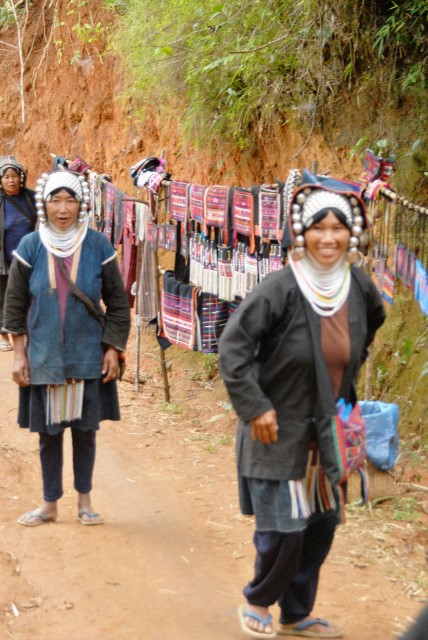
Akhu women at the trail head.
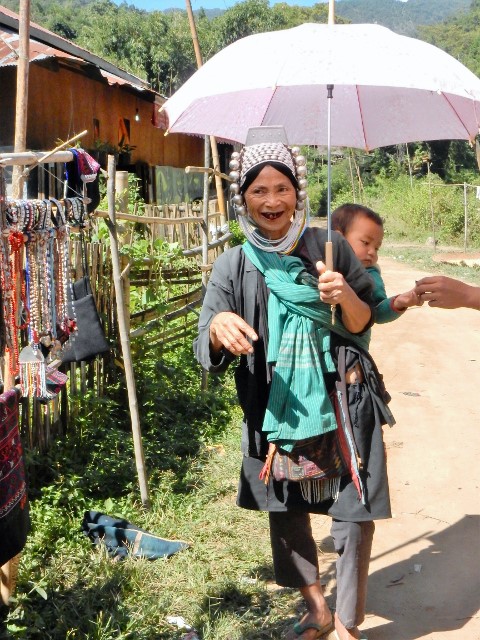
Before and after our trek, women are there to show us their wares.
We begin our trek. (As a disclaimer, I’ll call this a trek because this is what everyone keeps calling it. But to me, this is a “hike.” Granted, there were some pretty deep grades, but we were not backpacking, this was not an arduous multi-day journey; this was a day hike for which we were well-prepared with light layers of clothing, decent walking shoes, bottled water and a picnic lunch.)
There’s no arguing this is beautiful land. As we walk, Sai Leng points out plants and trees and talks about how many are used in medicines. We pass quite a few people on this road.
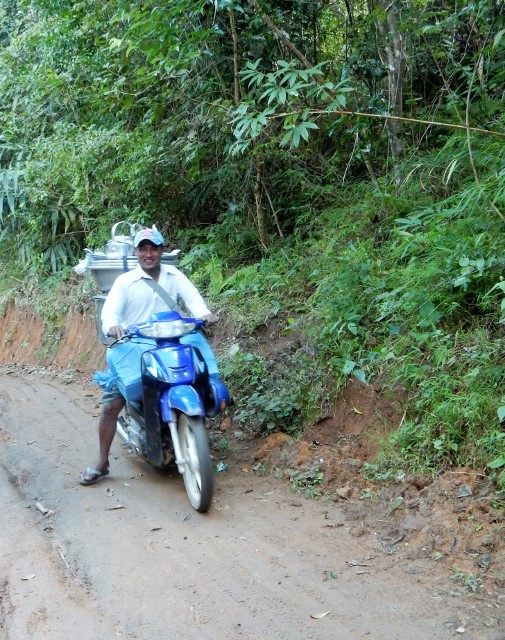
A few motorcycles passed us during our trek–although on a rainy day, we’d stick to walking.
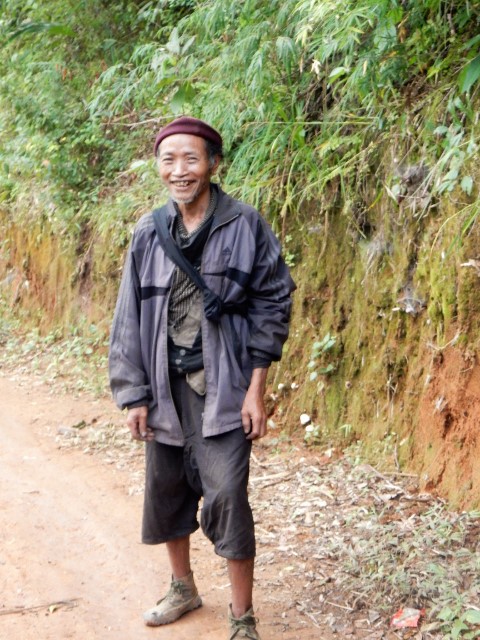
Up the hills and down, we’re greeted warmly.
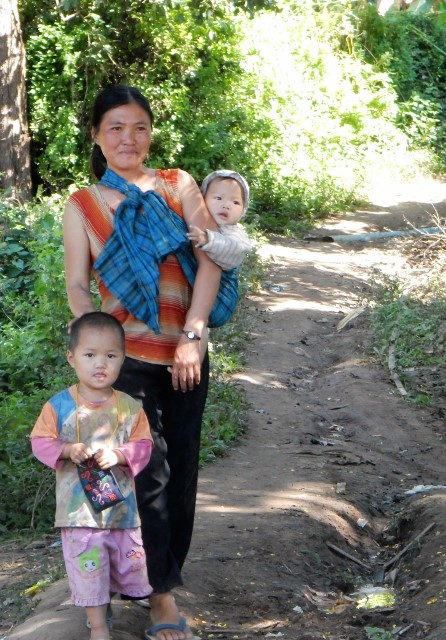
We arrive at the first village.
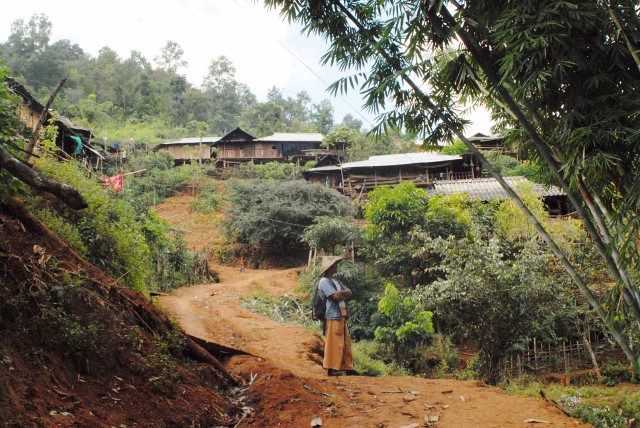
Our guide, Sai Leng, leads us up to our first home visit.
We’re of great interest to the many village children. When one of my friends digs out some candies to share, Sai Leng asks her not to. “We’ve learned from other cultures that guests giving things to our children can make them beg from visitors in the future, and we don’t want that.”
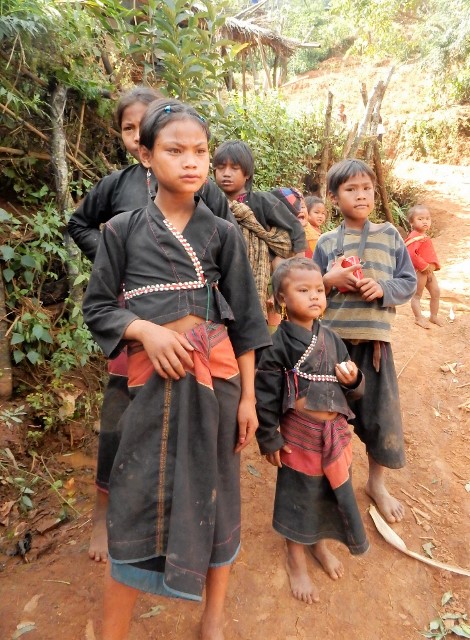
The children were curious about us.
We ask about school and are told, “The government wants the children to go to school. But there are not enough jobs for people, with educations or not. The government stipulates a percentage of children in the villages that must attend school. A certain number of children from each of these villages must attend school. But getting to the school is not easy and they don’t all want to go. So, sometimes, if a village is supposed to send 5 kids, say, the kids will rotate. But no one learns that way. It’s difficult.”
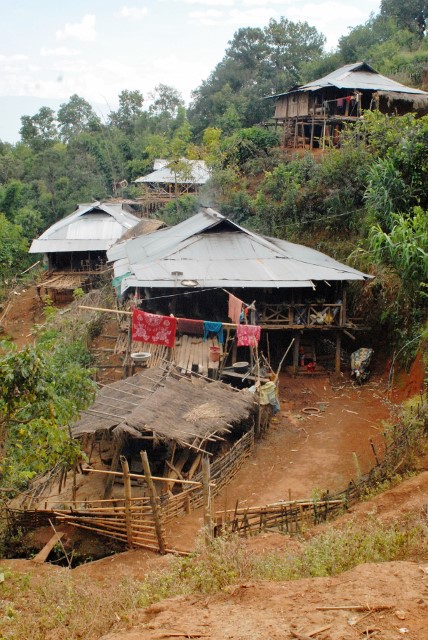
A village home.
Sai Leng says, “People want to talk with you, they like to laugh, and they want to try English, but they also like to hear you try to speak their language. And they want tourism. It can bring money to the villages. Right now, about three groups a week come. But we have concerns as well. What changes will happen when more groups come, if groups come every day? There is good and bad to that.”
We remove our shoes before we enter both homes. Both our hostesses serve refreshments. What we lack in language skills we make up in smiles and gestures of admiration for the beautiful children.
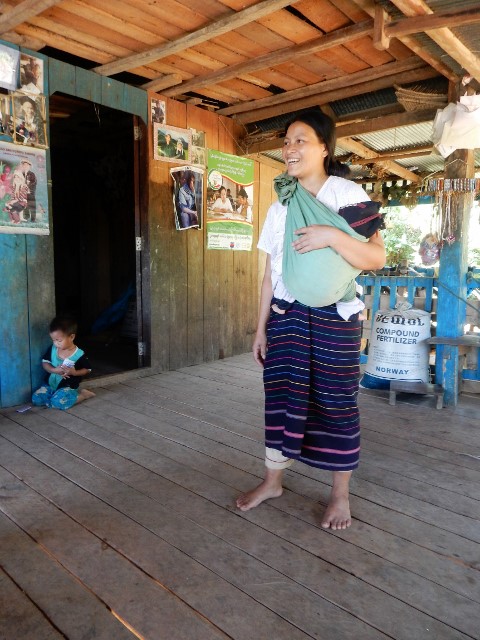
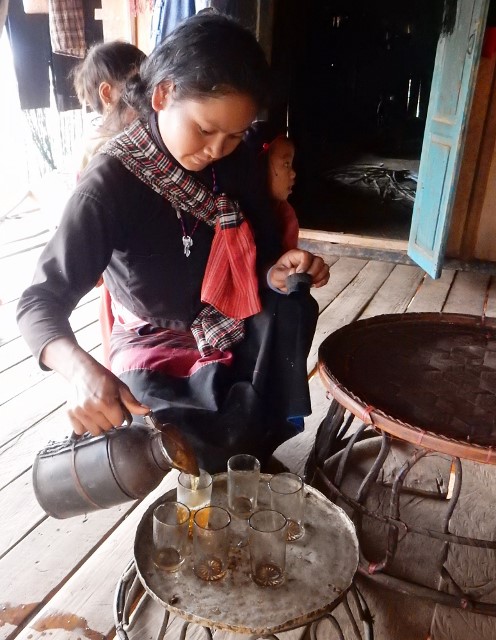
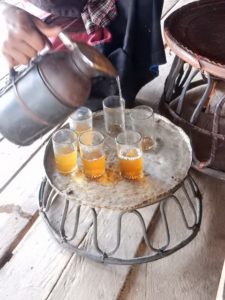
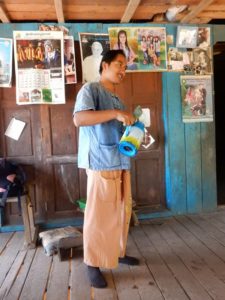
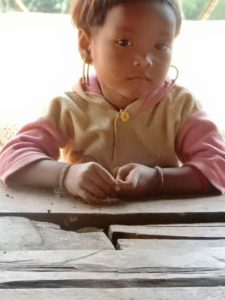
The homes we pass and the two we visit are single family homes, although many of the families are multi-generational. (The Loi hill tribe is one that lives in long houses designed for multiple families.) The homes are on stilts, constructed of wood, with the living quarters upstairs and space for livestock, farm equipment and storage below.
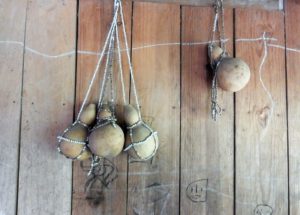
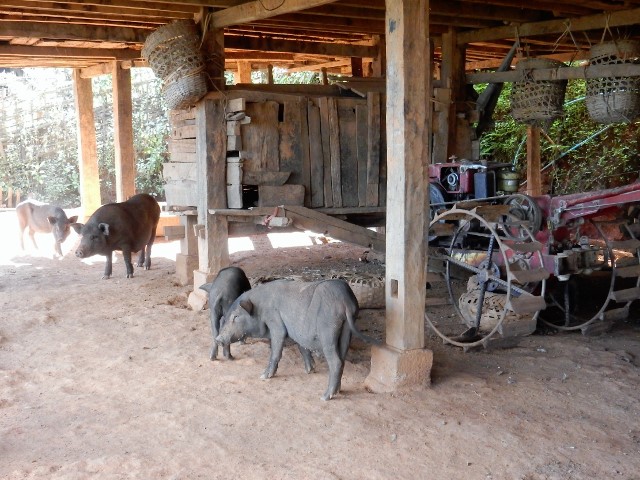
Living areas above, livestock and farm equipment below.
Upstairs, the homes have covered, open-aired living space.
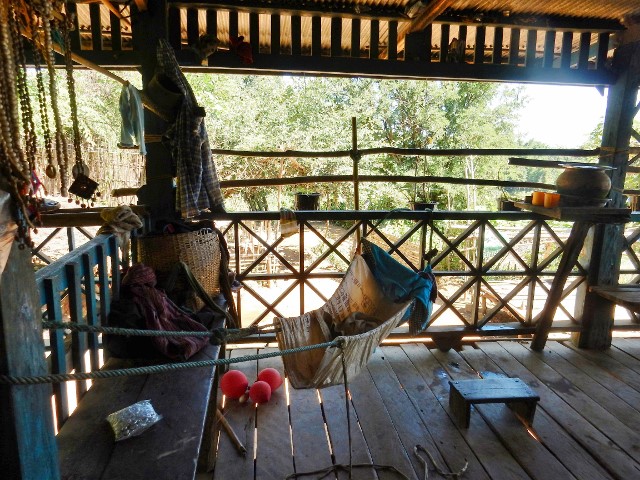
Most of the homes we see have covered, open-air living space.
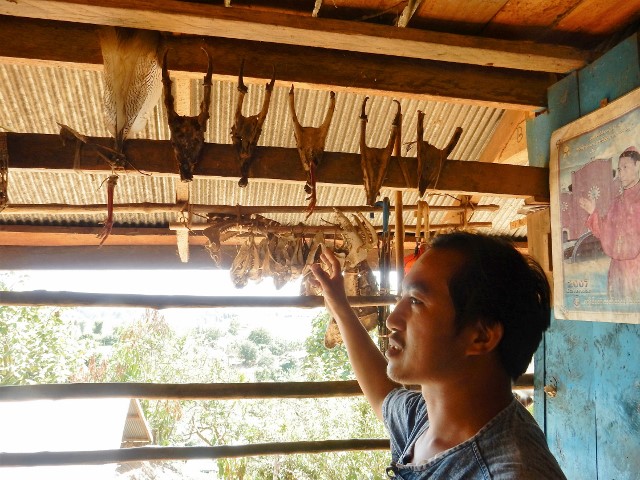
Most people have animist and Buddhist beliefs and we talk a little about medical practices. “Everything in the homes have value.”
Inside, there’s a kitchen, living and sleeping space.
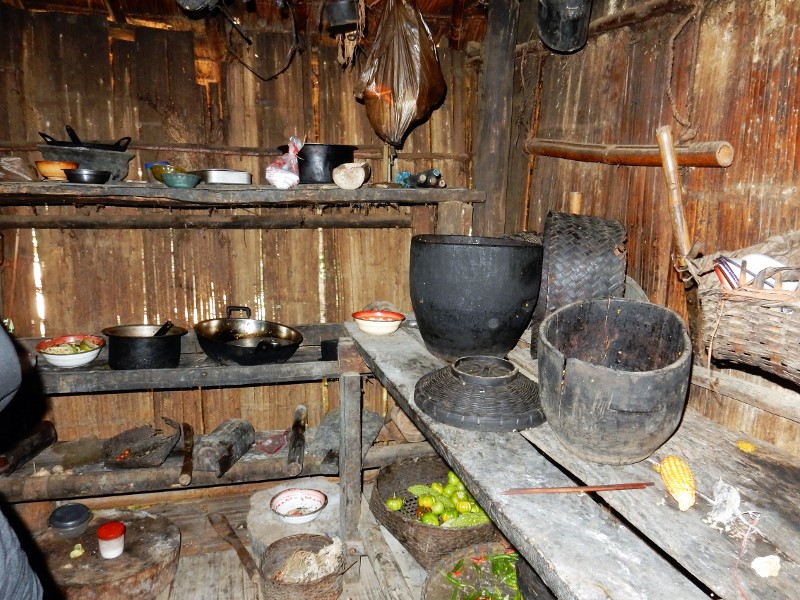
A view of the kitchen.
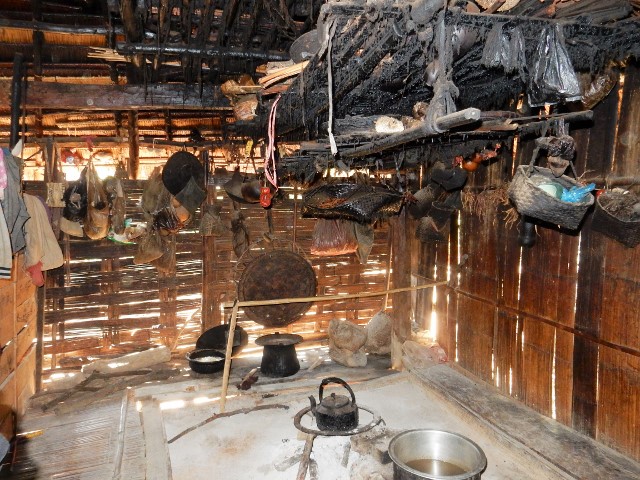
Indoor kitchen cooking space.
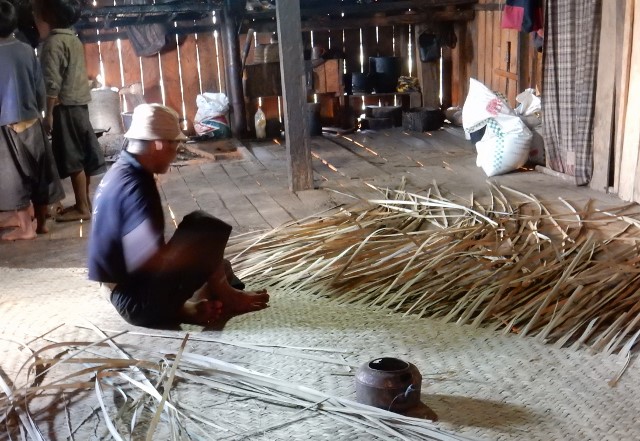
Hard at work.
Both of our home visits end with our hostesses displaying a selection of jewelry and weavings. These were not goods we saw at the markets, and the prices were very low. The scarves, purses, and jewelry items we buy are completely hand stitched, and the beaded necklace and ear ornaments are the same the women were wearing. We say our goodbyes. 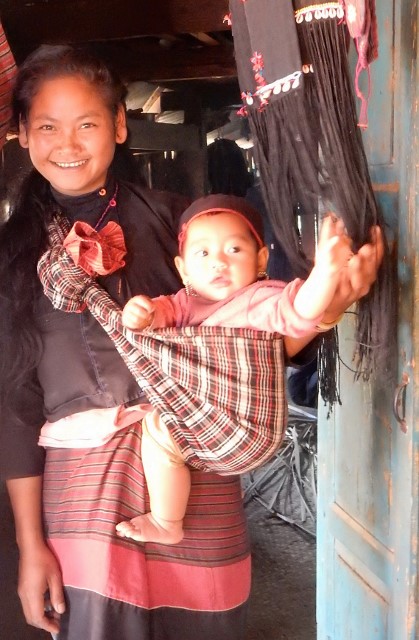
As we leave, we’re introduced to a village elder. Many Eng women blacken their teeth by chewing a tree bark and betel nut.
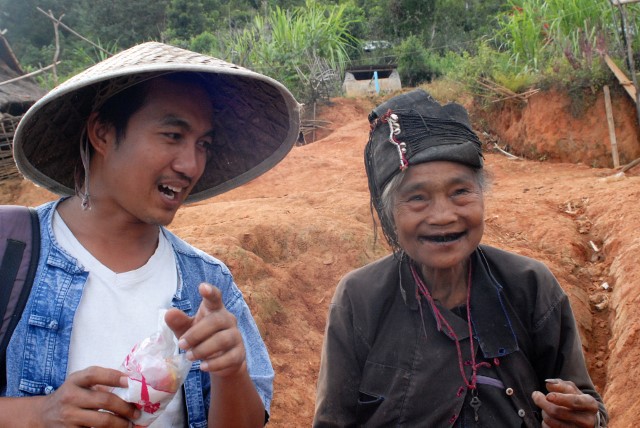
We’re introduced to a village elder.
As we leave, we get a more great views of the land below.
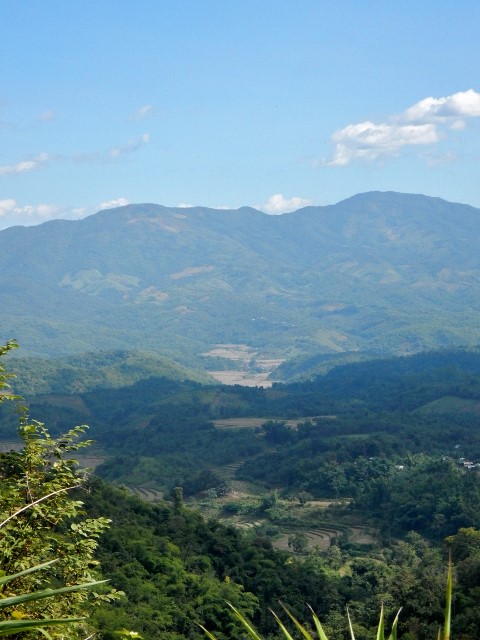
More than anything, I wonder what changes these children will see in their lifetime. Myanmar is beginning the next stage of hopefully positive political change. This includes the need to heal from years of war and a closed society, and providing opportunities for its population. Change is coming to Myanmar’s citizens, but to what extent is unknown.
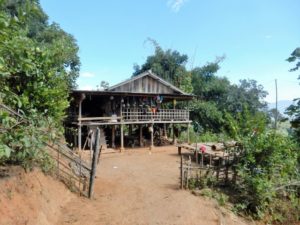
FOR MORE:
Myanmar Tourism Federation, https://www.tourismmyanmar.org
-All photos by Nancy Zaffaro.

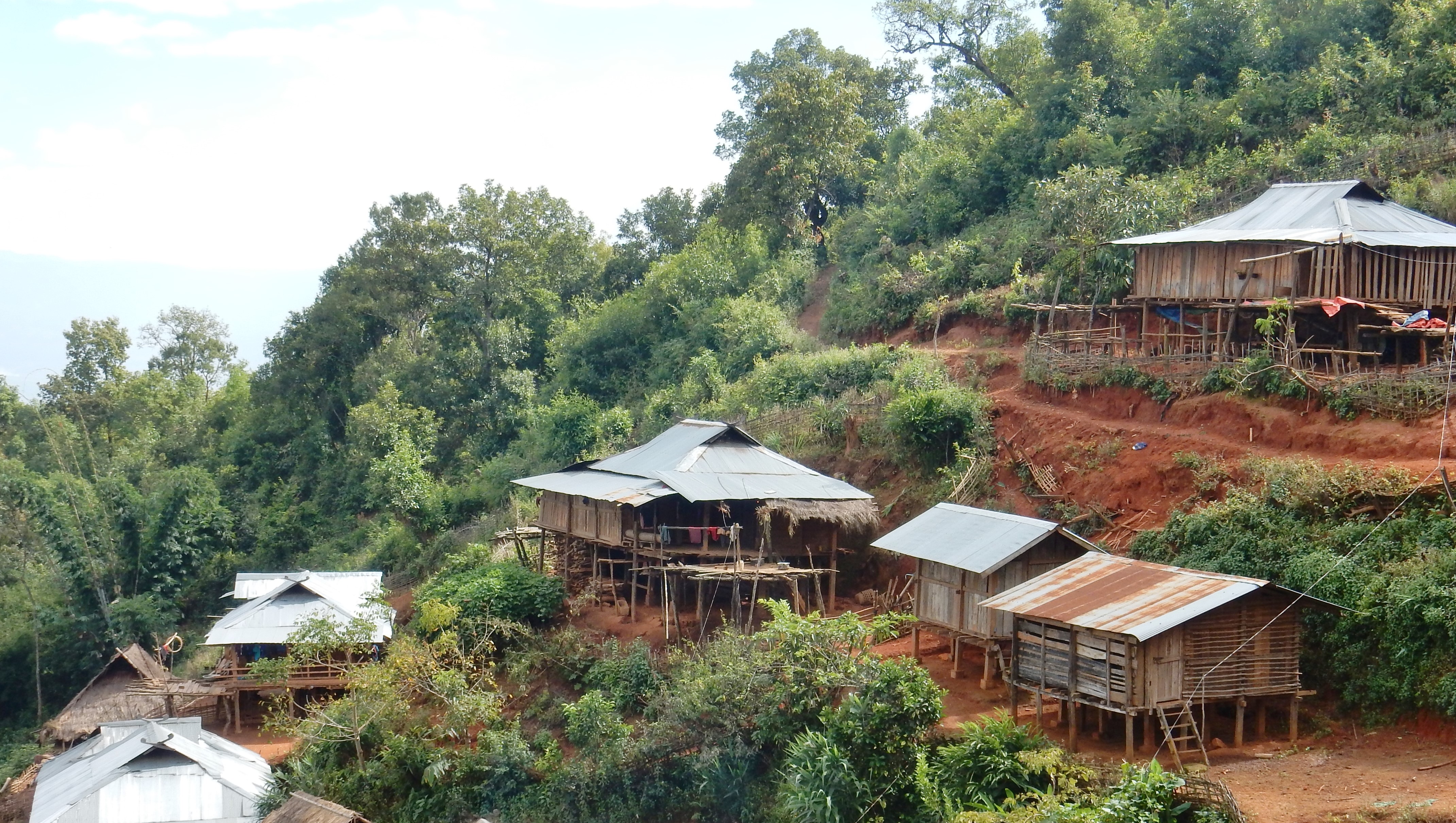

4 comments
After reading the reviews by the people who went to the villages around Keng Tung in 2016, would enjoy knowing how to contact (Mr) Sai Leng for our 3-person group trip in Keng Tung for mid-February, 2016. MTGA doesn’t have details.
Thanks, Lynn, will be sure I’ve got the bests contact information for Sai Leng and another possible guide and let you know.
Many hotels in Mae Sai can/will arrange the services of a guide into Myanmar. As I recall is was expensive, about $100+ a day. If you cross the river into Tachileik, you will often be approached by individuals that are authorized by the government to serve as guides. Another American adventure traveler and I hired a guide named “Slim” and he cost us about $20.00 per day for each of us. We had to pay for all of Slim’ passages (1/3 the cost of OUR passages) his meals (usually around $7.00 each, per day and his lodging. In the foreigner hotel we paid about $45.00 per person a night. Slim could not stay in the foreigner hotel and we paid roughly $7.00 each per night for his lodging. With a handsome tip, I believe I paid less than $250.00 in total for Slim’s services for a week.
Thanks for the great insights, Byron! Did you get your visa ahead of time? We arranged for ours ahead of time, but it still took quite a while for everything to be processed and we had to wait until our guide got there to transport us. Fortunately, right at the border gates, there was a little shop and a coffee cart that made really good espressos. Watching the comings and goings at the borders helped pass the time too. 🙂